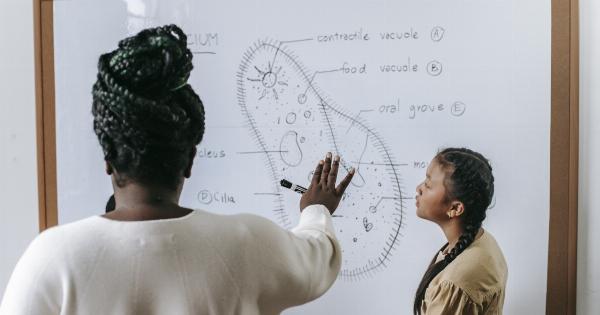Déjà vu, a French phrase that translates to “already seen,” is a curious phenomenon that many people have experienced at least once in their lives.
It refers to the feeling of familiarity or the sensation of reliving an event that seems to have happened in the past. While déjà vu has fascinated scientists, researchers, and philosophers for centuries, cognitive researchers have made significant strides in understanding and explaining this puzzling occurrence.
In this article, we explore the latest insights from cognitive research on déjà vu and shed light on its underlying mechanisms.
What Exactly is Déjà vu?
Before delving deeper into the explanations put forth by cognitive researchers, it’s crucial to grasp the concept of déjà vu. Déjà vu is characterized by a sense of familiarity, even though the current situation or event is supposed to be novel.
It can manifest as a split-second feeling or a lingering sensation, leaving individuals with a perplexing sense of having “been here before.” People often describe déjà vu as a mental time loop or a glitch in their reality, which intensifies the intrigue surrounding this phenomenon.
The Dual-Processing Theory
One prominent theory proposed by cognitive researchers is the Dual-Processing Theory.
According to this hypothesis, déjà vu occurs when there is a temporary disconnect or miscommunication between different cognitive processes involved in memory formation and retrieval. Our brains have two parallel systems responsible for processing information: the “recollection system” and the “familiarity system.”.
The Recollection System
The recollection system, also known as the episodic memory system, is responsible for retrieving specific details and contextual information from past experiences. It helps us recall specific events and mentally reconstruct them in our minds.
When the recollection system is functioning correctly, we accurately remember certain events, places, or people.
The Familiarity System
On the other hand, the familiarity system is responsible for assessing the feeling of familiarity and the degree of novelty attributed to a particular event or situation.
This system does not provide us with detailed memories but serves as a rapid assessment tool for determining whether something feels familiar or new. It helps us navigate and make quick judgments about our surroundings.
Disruption in Communication
Déjà vu is thought to occur when there is a momentary disruption in the communication or synchronization between these two systems, leading to an erroneous sense of familiarity being triggered in the absence of recollection.
In other words, individuals experience déjà vu when the familiarity system incorrectly signals that something is familiar, even if the recollection system fails to retrieve any associated memories or information.
Brain Region Involvement
Cognitive researchers have utilized advanced neuroimaging techniques to identify the brain regions implicated in déjà vu episodes.
The hippocampus and the rhinal cortex, which are critically involved in memory processing, have been found to show increased activation during déjà vu experiences. This suggests that the miscommunication between the recollection and familiarity systems may stem from abnormalities or temporary malfunctions in these brain regions.
Mnemonic Processing Errors
Another explanation put forth by cognitive researchers revolves around mnemonic processing errors. Mnemonic processing refers to how our brains encode, store, and retrieve memories.
According to this theory, déjà vu arises when our brains mistakenly tag a current experience as a duplicate memory, leading to the sensation of having previously encountered the same event.
Faulty Memory Encoding
In certain instances, researchers argue that déjà vu might occur due to faulty memory encoding. The brain may encode or register the present experience simultaneously in both short-term and long-term memory systems.
This parallel encoding might create a confusion or crossover, attributing the sensation of familiarity to the present moment. Essentially, your brain creates a memory before you consciously perceive it.
Neurological Conditions and Medications
Déjà vu has also been linked to certain neurological conditions and medications. For example, individuals with epilepsy, particularly those with temporal lobe epilepsy, often experience more frequent and intense déjà vu episodes.
Seizures originating from the temporal lobe can trigger a range of sensory experiences, including déjà vu. Additionally, some medications and drug treatments have been known to induce déjà vu as a side effect.
Psychological Factors and Emotions
Psychological factors and emotions may play a role in the occurrence and intensity of déjà vu. Stress, anxiety, fatigue, and sleep deprivation have been associated with a higher likelihood of experiencing déjà vu.
Moreover, certain emotional states, such as feelings of nostalgia or familiarity, can amplify the sensation of déjà vu. Scientists believe that these psychological factors modulate the brain’s memory processes and contribute to the onset of déjà vu episodes.
Conclusion
While the enigmatic nature of déjà vu continues to spur scientific curiosity, cognitive researchers have made significant progress in understanding this complex phenomenon.
The Dual-Processing Theory provides valuable insights into the miscommunication between the recollection and familiarity systems, shedding light on déjà vu experiences. Additionally, mnemonic processing errors, faulty memory encoding, neurological conditions, medications, and psychological factors all contribute to the fascinating world of déjà vu.
As cognitive research advances further, we may unlock even more secrets surrounding this intriguing phenomenon.





























